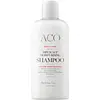What's inside
What's inside
 Key Ingredients
Key Ingredients

 Benefits
Benefits

 Concerns
Concerns

 Ingredients Side-by-side
Ingredients Side-by-side

Water
Skin ConditioningCetearyl Alcohol
EmollientIsohexadecane
EmollientBehenamidopropyl Dimethylamine
EmulsifyingBehentrimonium Methosulfate
Lactic Acid
BufferingCetrimonium Chloride
AntimicrobialArgania Spinosa Kernel Oil
EmollientGlycerin
HumectantXylitol
HumectantLactitol
HumectantHydrolyzed Vegetable Protein Pg-Propyl Silanetriol
Skin ConditioningPiroctone Olamine
PreservativePhenoxyethanol
PreservativeSodium Benzoate
MaskingParfum
MaskingPotassium Sorbate
PreservativeEDTA
Water, Cetearyl Alcohol, Isohexadecane, Behenamidopropyl Dimethylamine, Behentrimonium Methosulfate, Lactic Acid, Cetrimonium Chloride, Argania Spinosa Kernel Oil, Glycerin, Xylitol, Lactitol, Hydrolyzed Vegetable Protein Pg-Propyl Silanetriol, Piroctone Olamine, Phenoxyethanol, Sodium Benzoate, Parfum, Potassium Sorbate, EDTA
Water
Skin ConditioningDisodium Laureth Sulfosuccinate
CleansingCocamidopropyl Betaine
CleansingSorbitol
HumectantSodium Laureth Sulfate
CleansingPEG-7 Glyceryl Cocoate
EmulsifyingLaureth-3
EmulsifyingSucrose Cocoate
EmulsifyingPEG-150 Distearate
EmulsifyingBeta-Glucan
Skin ConditioningPanthenol
Skin ConditioningMaltodextrin
AbsorbentGuar Hydroxypropyltrimonium Chloride
Skin ConditioningPropylene Glycol
HumectantDimethicone
EmollientDimethicone Propyl Pg-Betaine
CleansingSodium Chloride
MaskingLactic Acid
BufferingAscorbyl Palmitate
AntioxidantPhenoxyethanol
PreservativeSodium Benzoate
MaskingPotassium Sorbate
PreservativeWater, Disodium Laureth Sulfosuccinate, Cocamidopropyl Betaine, Sorbitol, Sodium Laureth Sulfate, PEG-7 Glyceryl Cocoate, Laureth-3, Sucrose Cocoate, PEG-150 Distearate, Beta-Glucan, Panthenol, Maltodextrin, Guar Hydroxypropyltrimonium Chloride, Propylene Glycol, Dimethicone, Dimethicone Propyl Pg-Betaine, Sodium Chloride, Lactic Acid, Ascorbyl Palmitate, Phenoxyethanol, Sodium Benzoate, Potassium Sorbate
Ingredients Explained
These ingredients are found in both products.
Ingredients higher up in an ingredient list are typically present in a larger amount.
Lactic Acid is another well-loved alpha hydroxy acid (AHA). It is gentler than glycolic acid but still highly effective.
Its main role is to exfoliate the surface of the skin by loosening the “glue” that holds dead skin cells together. Shedding those old cells leads to smoother, softer, and more even-toned skin.
Because lactic acid molecules are larger than glycolic acid, they don’t penetrate as deeply. This means they’re less likely to sting or irritate, making it a great choice for beginners or those with sensitive skin.
Like glycolic acid, it can:
Lactic acid also acts as a humectant (like hyaluronic acid). It can draw water into the skin to improve hydration and also plays a role in the skin's natural moisturizing factor (NMF) in the form of sodium lactate.
Studies show it can boost ceramide production to strengthen the skin barrier and even help balance the skin’s microbiome.
To get results, choose products with a pH between 3-4.
Lower strengths (5-12%) focus on surface exfoliation; higher strengths (12% and up) can reach deeper in the dermis (deeper, supportive layer) to improve skin texture and firmness over time.
Though it was originally derived from milk, most modern lactic acid used in skincare is vegan. It is made through non-dairy fermentation to create a bio-identical and stable form suitable for all formulations.
When lactic acid shows up near the end of an ingredient list, it usually means the brand added just a tiny amount to adjust the product’s pH.
Legend has it that Cleopatra used to bathe in sour milk to help reduce wrinkles.
Lactic acid is truly a gentle multitasker: it exfoliates, hydrates, strengthens, and brightens. It's a great ingredient for giving your skin a smooth, glowing, and healthy look without the harshness of stronger acids.
Read more about some other popular AHA's here:
Learn more about Lactic AcidPhenoxyethanol is a preservative that has germicide, antimicrobial, and aromatic properties. Studies show that phenoxyethanol can prevent microbial growth. By itself, it has a scent that is similar to that of a rose.
It's often used in formulations along with Caprylyl Glycol to preserve the shelf life of products.
Potassium Sorbate is a preservative used to prevent yeast and mold in products. It is commonly found in both cosmetic and food products.
This ingredient comes from potassium salt derived from sorbic acid. Sorbic acid is a natural antibiotic and effective against fungus.
Both potassium sorbate and sorbic acid can be found in baked goods, cheeses, dried meats, dried fruit, ice cream, pickles, wine, yogurt, and more.
You'll often find this ingredient used with other preservatives.
Learn more about Potassium SorbateSodium Benzoate is a preservative. It's used in both cosmetic and food products to inhibit the growth of mold and bacteria. It is typically produced synthetically.
Both the US FDA and EU Health Committee have approved the use of sodium benzoate. In the US, levels of 0.1% (of the total product) are allowed.
Sodium benzoate works as a preservative by inhibiting the growth of bacteria inside of cells. It prevents the cell from fermenting a type of sugar using an enzyme called phosphofructokinase.
It is the salt of benzoic acid. Foods containing sodium benzoate include soda, salad dressings, condiments, fruit juices, wines, and snack foods.
Studies for using ascorbic acid and sodium benzoate in cosmetics are lacking, especially in skincare routines with multiple steps.
We always recommend speaking with a professional, such as a dermatologist, if you have any concerns.
Learn more about Sodium BenzoateWater. It's the most common cosmetic ingredient of all. You'll usually see it at the top of ingredient lists, meaning that it makes up the largest part of the product.
So why is it so popular? Water most often acts as a solvent - this means that it helps dissolve other ingredients into the formulation.
You'll also recognize water as that liquid we all need to stay alive. If you see this, drink a glass of water. Stay hydrated!
Learn more about Water